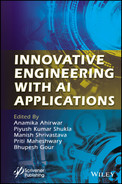13
Improving Wireless Sensor Networks Effectiveness with Artificial Intelligence
Piyush Raja1*, Santosh Kumar2, Digvijay Singh1 and Taresh Singh3
1Department of CSE, COER University, Roorkee, India
2PSIT College of Higher Education, Kanpur, India
3GRD IMT, Dehradun, Uttarakhand, India
Abstract
Although Artificial Intelligence’s key goal is to create systems that mimic a person’s intellectual and social ability, Distributed Artificial Intelligence follows similar objective then with an emphasis scheduled social principles. A concept of multiagent networks is a new model designed for improvement of Distributed Artificial Intelligence. Multi-agent structures are composed of several interconnected intelligent systems called agents that can be deployed as software, a dedicated computer, or a robot. In a multi-agent environment, intelligent Agent exchange information with one another in order to coordinate their organisation, delegate assignments, and share information. Multi-agent systems, artificial societies, and simulated organizations are all part of a new computing paradigm that includes issues like cooperation and competition, coordination, collaboration, communication and language protocols, negotiation, consensus creation, conflict detection and resolution, and collective intelligence activities carried out by mediators (e.g. problem solving, preparation, knowledge, decision constructing in distributed method), cognitive multiple intellect actions, social then active constructing, distributed management and switch, security, consistency, and robustnes. Circulated intellectual sensor network may be situated viewed as a structure made up of numerous mediators (The sensor node), with sensors cooperating to form a collective system whose aim would be to collect data from physical sources variables of systems. Sensor networks may thus be viewed as multi-agent structures or artificially ordered communities that use sensors to sense their surroundings. However, how can Artificial Intelligence mechanisms be implemented inside WSNs? The dilemma can be approached in two ways: the first solution has programmers consider the overall goal to be achieved and develop together agents and multi-agent system’s interaction process. In the second strategy, the author imagines and builds a group of self-interested agents, which then use evolutionary learning methods to adapt and communicate in a secure manner.
Keywords: WSN, AI, multi-agent systems, simulation models
13.1 Introduction
Although the prime intention of Artificial Intelligence (AI) is to build devices that replicate a person’s intellectual and social abilities, Distributed Artificial Intelligence focuses on human cultures. The concept of multiagent networks is a novel model for Distributed Artificial Intelligence advancement. A multi-agent structure consists of several integrated artificial structures known as agent, which could remain implemented as software, a dedicated device, otherwise as the robot. Intelligent agents cooperate to each other with a multi-agent environment to organise their organisation, delegate tasks, and exchange knowledge [13]. The problem can be solved by these ways: the first is for programmers to think about the end objective and improve each other agent and multi-agents system’s interaction mechanism. Figure 13.1 shows the life cycle of AI.
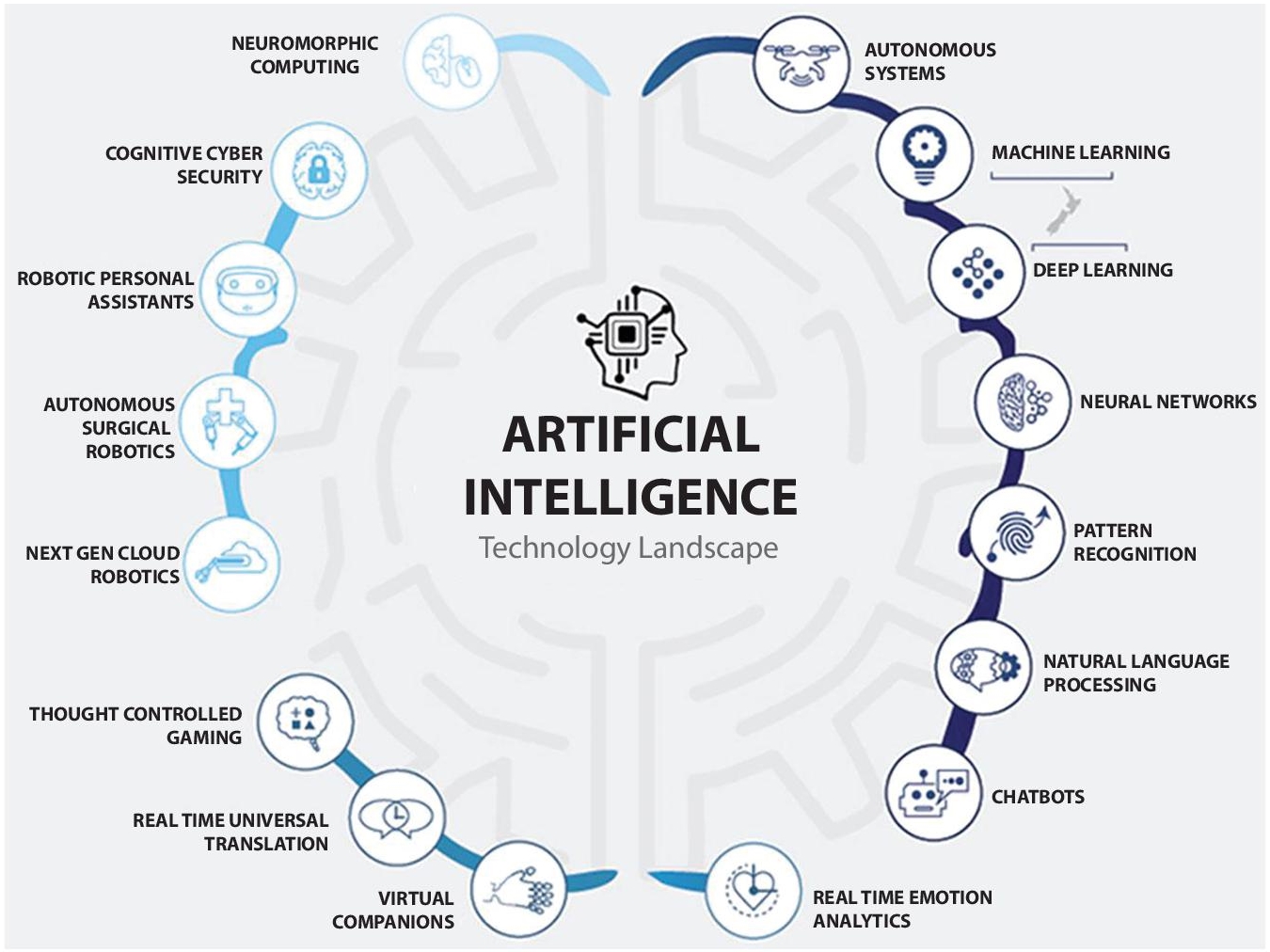
Figure 13.1 Artificial intelligence (Sources: aitimejournal.com).
13.2 Wireless Sensor Network (WSNs)
Sensor Networks (SNs) are the devices made up of thousands of tiny stations known as sensor nodes. The main purpose of sensor nodes is to track, log, and inform other stations of a certain condition to changed location. The SN is often the collection of sophisticated transducers connected by a network to track and record conditions in a variety of locations (Figure 13.2).
Temperature, humidity, heat, wind direction and speed, light rate, vibration intensity, sound intensity, power-line voltage, chemical concentrations, pollutant levels, and critical body function are about the most often monitored parameters.
Sensor nodes can be thought of as miniature computers with incredibly simple interfaces and materials. While these instruments have limited computing capacities on their own, when combined, they have significant processing power. The radio transceivers unit, the slight microcontrollers, then vitality source, normally a battery, are generally included in each sensor network node [1]. Sensor nodes can range in size from the size of a shoebox to mass off the grain of dust (Romer and Mattern, 2004). In most cases, a sensor network is the wireless ad hoc network, in which each sensor boosts the multi-hop routing algorithms. They are necessary to remind the sensor nodes to face more extreme power limitations than PDAs, cell phones, or laptop computers [3]. One controller is normally in charge of the whole network: the base location. The prime characteristics of a base station is to serve like the gateway to another network while still acting as an efficient data processor and storage centre. WSNs have been the presumptive panacea for tackling a variety of large-scale decision and information retrieval challenges thanks to advancements in microelectronics and wireless communications. WSNs have a wide range of uses, but most of them include surveillance, tracking or regulating, habitat surveillance, entity tracking, nuclear reactor control, fire detection, and road traffic observations. The WSN is dispersed across an area, collecting data through its sensor nodes. For environmental surveillance, the multiplicity of the WSN ought to exist [4]. Owing to the prototype design of the programmes, all of them have been short-lived. Since they offer important price funds in addition allow new functionalities, WSN is built for machinery Condition-Based Maintenance (CBM).

Figure 13.2 Sensor nodes are connected.
Despite the development of a range of innovative WSN programmes and solutions, a number of new issues or difficulties remain to be solved or changed. Optimal routing methods, the length of the WSN (the lifetime of the nodes is always very limited), reconfigurability without redeployment, and so on are examples of such issues.
Finally, as the popularity of WSNs has grown, there is no shared forum. Some symbolic designs, such as Berkeley Motes, the first commercial motes platform, have a larger consumer and developer community. However, since a sensor node is a processing unit with simple components, exploration test center also in businesses tend to design and manufacture their own sensors. Mica Mote, Tmote Sky, BTnode, Waspmote, Sun Spot, G-Node, and TIP sequence mote are some of the platforms available.
13.3 AI and Multi-Agent Systems
Classical Artificial Intelligence sought to replicate a human’s analytical and social skills in machineries. Rational agents are at the heart for present approach to Artificial Intelligence (AI). “An agent is something who could intellect their environments through the sensor and acts on them using actuators [14].” A rational agent is one that seeks to maximize an optimal output metric at all times. A logical agent can be described in a variety of ways, including human agents (with eyes as sensors and hands as actuators), robotic agents (with cameras as sensors and the wheel as actuator), and software agent (having the GUI as sensor and as an actuator). AI could be defined as analysis also of their ideas and design of artificial rational agents from this viewpoint. Figure 13.3 shows AI with its different multi agent systems.
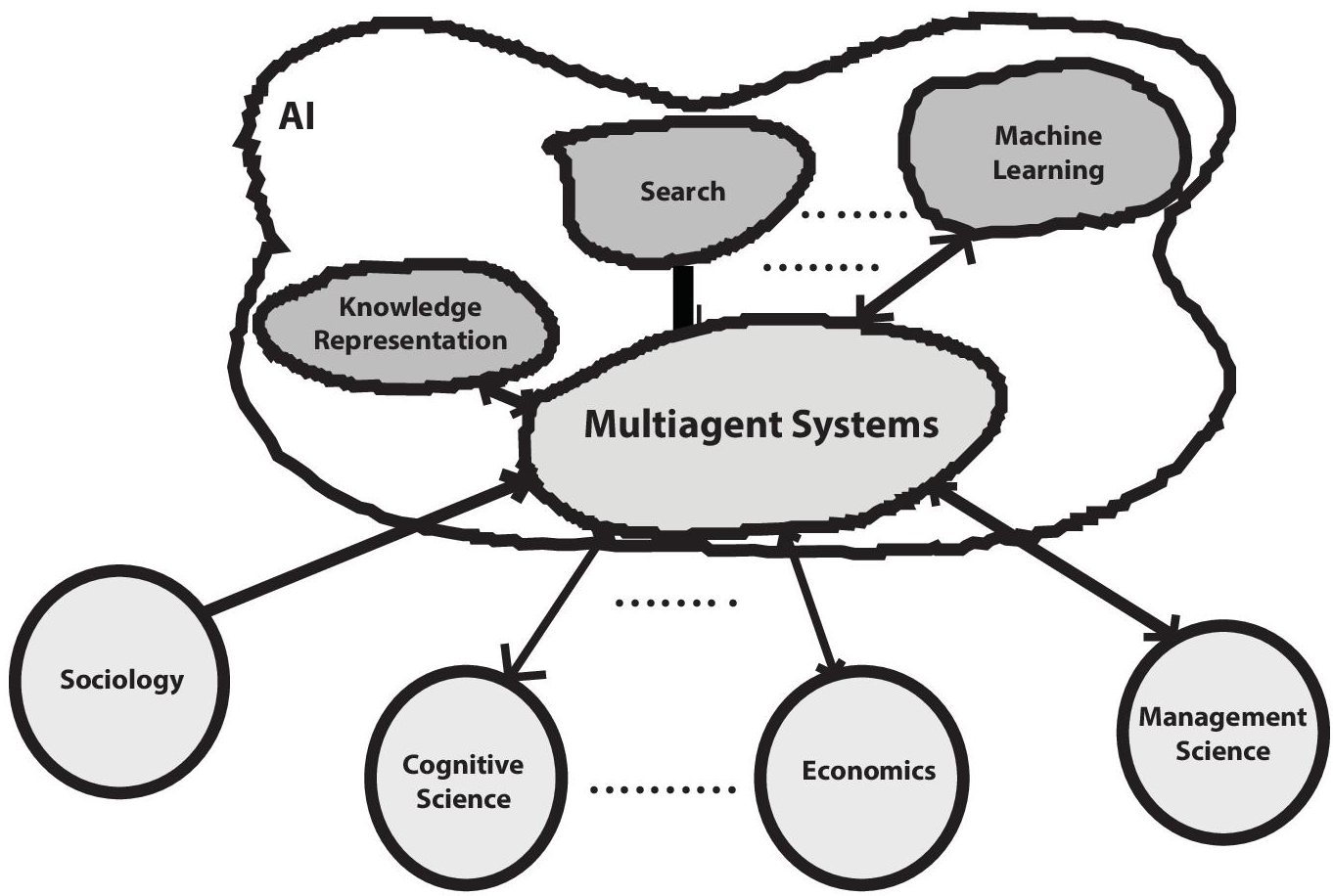
Figure 13.3 AI and multi-agent systems.
Except this, the agents remains rarely standalone programs. They coexist and communicate with other agents in a variety of ways in certain contexts. Intelligent Web tech agents, soccer-playing machines, e-commerce negotiation agents, and machine vision committed agents. Multi-Agent Systems (MAS) locate the system that contains a set of agents that can theoretically communicate with one another, and Distributed AI is the subfield of AI that transacts with ideas then architecture of multi-agent systems (DAI).
13.4 WSN and AI
An intelligent sensor changes its internal behavior to improve its ability toward data collection through physical atmosphere besides transmit it to a base station or a host device with great manner. Self-calibration, self-validation, and reward are all features of intelligent sensors. Figure 13.4 shows AI and WSNs how effecting our daily lifes and how efficient.

Figure 13.4 AI and WSN in daily life of the elderly.
The term “self-calibration” refers to the sensor’s ability to track the measuring state and determine whether or not a new calibration is required. Self-validation makes use of statistical simulation, error separation, and knowledge-based techniques. To achieve high precision, self-compensation employs compensation techniques. Artificial Neural Networks (ANN), Fuzzy Logic, and Neuro-Fuzzy are examples of artificial intelligence approaches commonly used in industry [4]. Wireless intelligent sensors are created by embedding intelligent sensor systems in Wireless Sensor Networks. Building intelligent sensor systems necessitates the use of artificial intelligence techniques. WSNs’ primary analysis concerns are coverage, connectivity network lifespan, and data fidelity. In recent years, there has been a surge in interest in Artificial Intelligence and DAI, and whom methods for overcoming WSN constraints, developing new algorithms, and developing new WSN implementations. Initial sensor collection and task assignment, as well as runtime adaptation of assigned tasks/resources, are all part of resource management. Power, bandwidth, and network lifespan are among the parameters to be configured. The use of mutual intelligence in resource management within WSNs was advocated in this case by Distributed Independent Reinforcement Learning (Shah et al., 2008). Finally, intelligent network-working and collaboration applications are proposed as optimization elements for WSNs.
13.5 Multi-Agent Constructed Simulation
The simulation MABS that aims to simulate the behaviour of agents with the aim of study their associations and their belongings of their decisions. As a result, the experiences of the agents have a huge impact to final result. Figure 13.5 shows the overview of the multi-agent simulation system. How the journey of UI agents to different models.
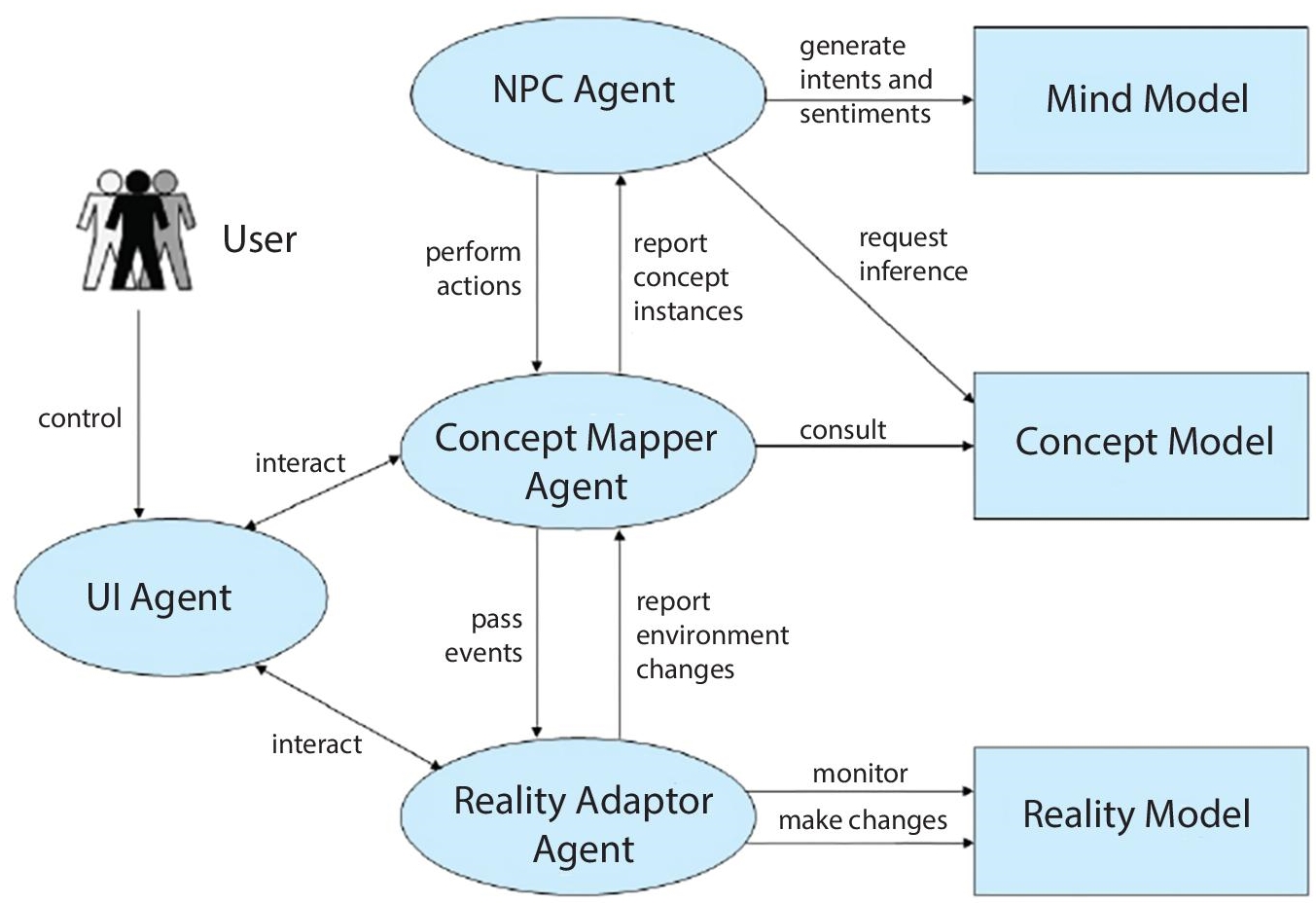
Figure 13.5 The overview of the multi-agent simulation system.
MABS models are also utilized on investigation to reflect and understand social structures, along with measure emerging approaches to change and politics on various systems. Since MABS is a relatively new field, also some approaches besides resources for its production. In reality, machine modelling, software engineering, and agent-oriented software engineering all make contributions (AOSE) [5]. The methodology permits the representation of core facets of distributed systems, such as organisation, logic, collaboration, and teamwork mechanisms, among other things. Instead of offering implementation techniques, the main feature of WSN simulators is to replicate a WSN process and simulate all hardware characteristics for each node in the simulated WSN [2]. The basic concept is to suggest a paradigm that permits the extremely dispersed sensor network to function like multi-agents framework. Agents work together in this situation to save and boost services within the WSN. Finally, MABS will make a significant contribution to the development of implementation plans and operations.
13.6 Multi-Agent Model Plan
Model proposal is a multi-agent hybrid model that simulates the deployment of software agents over each WSN. This is accomplished by a layered framework that combines deterministic hardware models with agent-based knowledge to analyse various techniques, such as multiple agents for a specific application. Mobile agents are used to manage network infrastructure and provide information. Main deterministic models for WSN performance are used to do this, such as the protocol model, which includes totally infusion protocols; also its operation is typically dependent on the state of the physical platform of nodes, the physical model, which represents underlying hardware and measurement devices, and the media model, which connects node to “real world” via a radio channel and one or more. In addition, topology and physical variables are used depends upon their characteristics they would be simulated. The programme agents are then used to complete all of the tasks needed by the application study scenario.
13.7 Simulation Models on Behalf of Wireless Sensor Network
Current modelling models attempt to depict how a WSN operates. For example, in Egea-Lopez et al. (2006), Egea-Lopez et al. introduced a general simulations model that proceeds existing WSN simulator components into account. As a result, deterministic models exist to describe hardware, the environment, electricity, and radio channels, among other things. This model is also valuable to learning how a WSN works in real life, but those that never permit to the evaluation of various implementation methods. Furthermore, the number of simulation nodes is much less than that of a real network, since scalability is limited by the computing needed to simulate full hardware [3]. Cheong later presents a new proposal in Cheong [1]. The use of various simulation methods also designed in order to WSN, and the ability to guide execution from simulation, are some of the work’s strengths [11]. Cheong, on the other hand, suggests a programming model dependent on characters, which are a hybrid of objects and agents. Actors are contact objects of data flow, but they are unaware of their surroundings and unable to make choices. Wang and Jiang propose another solution in Wang, in which they present a technique for controlling and optimizing capital in a WSN using mobile agents. Control, encoding, and memory optimization are all examples of resource optimization.
13.8 Model Plan
A layered architecture that uses deterministic hardware models of agent-based intelligence is proposed to simulate the deployment of software agents over each WSN. This is achieved in order to compare various techniques, such as different agents for a specific application.
To monitor network capabilities and promote intelligence, we intend to use mobile agents. The main deterministic models are used to do this; these models define features such as node platform, power usage, radio station, and media [6]. In addition, topology and physical variables are applied based on the application that would be simulated. And then, virtual agents are used to complete all of the tasks needed by the application research scenario. Three separate layers are provided below that allow intelligence to be performed through agents over a WSN.
13.8.1 Hardware Layer
One of the most important layers is hardware, which takes charge of specifying all modules that are relevant to hardware requirements and the context in which the network will be implemented. Maximum model of the layer remains defined through current WSN(Wireless Sensor Network) simulator. Any models that define these components are presented below [7] and shown in Figure 13.6 (a, b and c).
- Node Model: Egea-Lopez et al. (2006) described this model, in which a node is divided into protocols, hardware, and media. The operation of protocols is dependent on hardware specifications and includes all of a node’s communication protocols.
- Environment Model: It holds essential variables of the physical region where networks will be implemented. A node’s sensor should capable for identify to these variables; otherwise, higher-layer agents would not be executed [8]. In addition, this model specifies topologies, otherwise arrangement of how the nodes are organized; they have several topologies for a WSN, including square, star, ad hoc, and irregular topologies (Piedrahita and colleagues, 2010).
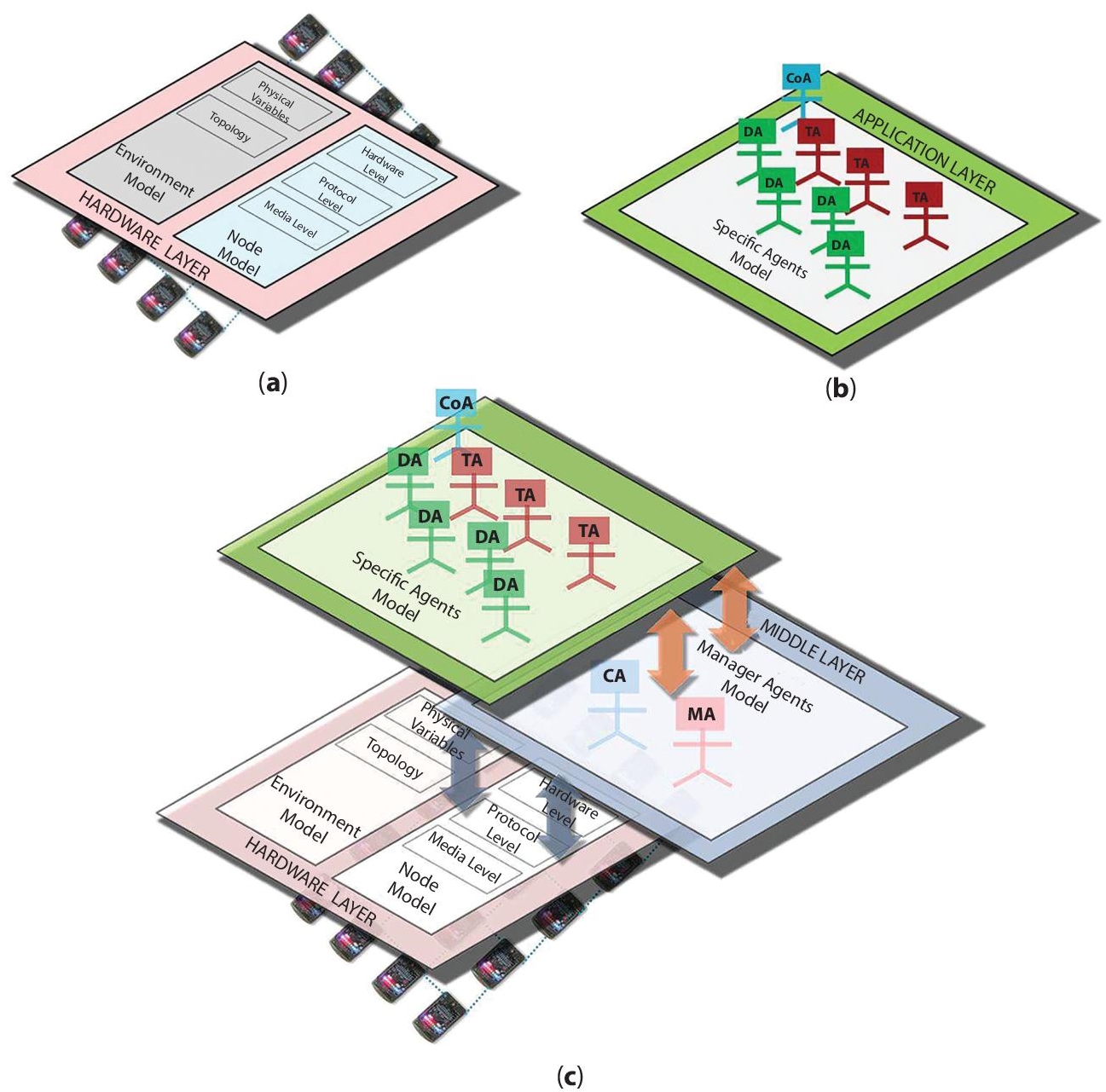
Figure 13.6 (a) Hardware layer. (b) Application layer. (c) All layers.
13.8.2 Middle Layer
Another important layer is middle, which takes charge of connecting with WSN and agent needed for a specific presentation. Consequently, this layer has two agents that screen also the tackle capital.
- Agent of Manager Capital (MA): It is a sophisticated mobile agent that makes choices on memory and power management. It is aware of the requisite fee of the agent to complete a mission, and it either refuses or confirms the execution of an agent [10]. This is a decision-making agent dependent on Georgeff et al.’s BDI model (1998). It also indicates whether the bunch of jobs could also do using the specified hardware.
- CA stands for Capturing Agent of physical variables, and it is a mobile agent that is knowledgeable of physical variables when they relate to a specific function. It makes decisions on whether the reason is propagated and transmitted.
13.8.3 Application Layer
The implementation layer reflects the WSN’s deployment for a specific research case or application. As a result, this layer contains agents that execute the functions that the program requires.
The Coordinator Agent (CoA) is an agent that is aware of jobs demanded by a study case and maintains a queue of implementation tasks. As a result, it plans, organises, and negotiates them in order for them to be properly executed by a TA [9]. It also uses a BDI model to make choices.
- Tasks Agent (TA): A reactive agent that completes tasks delegated by a CoA for as long as the CoA specifies.
- Deliberative Agent (DA): This is a mobile agent that also makes judgments using the BDI model. A CoA should not have to manage, coordinate, or discuss its activities. As an outcome, they finish the series of tasks in order to accomplish its own target, fixed by an MAS to which it belongs.
Since not all SN platforms can execute a rational agent, there is a specific treatment for device multi-agent systems [12]. For a basic application, the collection for TAs with a CoA that controls and directs the whole system, and for a complex application, there is a group of DAs that collaborate to accomplish a general objective.
13.9 Conclusion
To refine a network of Distributed Wireless Sensors (DWS), DAI principles, algorithms, and applications can be used. WSN optimization using logical agents is possible with the Multi-Agent System approach.
Since the suggested model uses multi-agent systems in conjunction with layered architecture to promote intelligence and mimic any WSN, it is feasible to incorporate a solution that allows a sensor network to act like an intelligent multi-agent system. All that is required is knowledge of last request wherever WSN would be deployed. A layered architecture may also provide a WSN framework modularity and structure. Furthermore, the suggested model focuses on how a WSN functions and how to make it intelligent. A distributed sensor network could be installed in an effective way and accomplish the stated goals of taking physical parameter extents through its own various types of rational agents that could be reconfigured to fit some kind of application and measures, as well as to fit the most appropriate strategy to achieve the proposed objectives from the perspective of multi-agents, artificial swarm intelligence, and artificial intelligence. Checking the model with a real WSN is something else that needs to be done. To complete the testing, some research cases of multi-agent systems for specific applications are expected. The Solarium SunSPOT simulator is a good method to use. This simulator provides a practical environment for developing and analysing SunSPOT devices except hardware platforms. Following the completion of this research, the model could be run on a real WSN of SunSPOT devices.
References
- 1. Cheong, E., in (2k7). Aimed at WSN, performer-in favor of programming is used, Actor-oriented programming for wireless sensor networks. 7–15, 2007.
- 2. Conte, R., Gilbert, N., Sichman, J., MAS and social simulation: A suitable commitment, Multi-agent systems and agent-based simulation, pp. 1–9, Springer, 1998.
- 3. Cruller, D., Estrin, D., Srivastava, M., Overview of sensor networks. Computer, 37, 8, 41–49, 2004.
- 4. Davoudani, D., Hart, E., Paechter, B., Artificial Immune Systems, pp. 288–299, 2007.
- 5. Georgeff, M., Pell, B., Pollack, M., Tambe, M., Wooldridge, M., Wooldridge, M., The belief-desire-intention model of agency, Intelligent agents V. agent theories, architectures, and languages: 5th International Workshop, ATAL’98, Proceedings, Springer, Paris, France, July 1998, pp. 630–630, 1998.
- 6. The belief-desire intention model of agency. 5th International Workshop, ATAL’98, Paris, France, Intelligent Agents V. Agent Theories, Architectures, and Languages, July 1998.
- 7. 5th International Workshop, ATAL’98, Proceedings, Paris, France, Springer, pp. 630–630, July 1998.
- 8. Levis, P., Lee, N., Welsh, M., Culler, D., TOSSIM: Accurate and scalable simulation of whole TinyOS implementations. Proceedings of the 1st International Conference on Embedded Networked Sensor Systems, ACM, p. 137, 2003.
- 9. Moreno, J., Velásquez, J., Ovalle, D., A methodological approach to the construction of simulation models based on the multi-agent paradigm, in: Advances in Systems and Informatics, vol. 4, 2009.
- 10. www.mdpi.com/1424-8220/20/15/4143
- 11. www.semanticscholar.org/paper/Multi-Agent-Distributed-Artificial-Intelligent-and-GenzaN/77075b348c2a8aeaa86af7c4df8efa3fade83c0b
- 12. www.researchgate.net/figure/The-overview-of-the-multi-agent-simulationsystem_fig2_221320334
- 13. www.aitimejournal.com/@nisha.arya.ahmed/what-is-artificial-intelligence-ai
- 14. Russell, S.J. and Norving, P., Artificial intelligence: A modern approach. 111– 114, 2003 .
Note
- *Corresponding author: [email protected]
